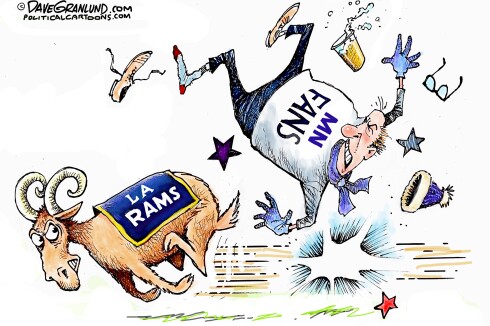“I told you so! I told you so!” I can just hear such gleeful remarks rippling across the Iron Range, remarks that redeem and re-substantiate long-embedded accusations that a park near Hibbing has connections with communism.
What may have prompted the “I told you sos” was the June 25 News Tribune article, “This Iron Range co-op is a woodsy park with Finnish, radical roots.” The article confirmed, via FBI reports, the vague suspicions that Mesaba Park had been associated with communistic ideals in the past. Thus, suspicions fueled by rumor and misunderstanding resulted in long-held, bitter prejudices, attitudes that considered the park and the people associated with it as “bad,” despicable, and to be avoided.
ADVERTISEMENT
Those prejudices are understandable, for they reflect an uncomfortableness (as well as fear and resentful anger) that some Range citizens, especially in previous generations, felt toward their Finnish neighbors.
In the early 1900s, immigrant Finns were a tight-knit ethnic group, many of them not yet speaking English or without U.S. citizenship. They were clannish. They built their own stores, churches, and social halls. And they published numerous Finnish-language newspapers. They spoke a strange-sounding language. It seemed they didn’t want to assimilate into American society.
Most notably, some immigrant Finns acquired the reputation of being “political radicals.” These Finns evolved as a driving force for union-organizing and establishing a vast network of cooperative enterprises.
This was not true of all Finnish immigrants. Put simplistically, there were White Finns and Red Finns, a distinction also used in Finland.
The White Finns were characteristically devoutly religious. They were more aligned with the business community and typically employed in professional or managerial capacities. Most adamantly, they shunned any involvement or support of union rabble-rousing.
In contrast, the Red Finns were typically miners and lumberjacks. Because many were experiencing horrendous exploitation (particularly harsh, dangerous working conditions and meager pay) and because many had acquired a sense of class consciousness in Finland, these Finns were eager to participate in union-organizing.
The Red Finns educated themselves about employer-employee relations via Marxist literature. Most learned about class consciousness through their publications, and a few attended the Work People’s College in Duluth’s suburb of Smithville, a long-forgotten, historic institution that trained union and cooperative organizers in the theory and practice of socialism.
ADVERTISEMENT
Their common-sense goals included a 10-hour workday; a five-day work week; a dignified, livable wage; the right to collective bargaining; and compensation for injuries. The vehicles for achieving these goals included union and political organization. Intense passions led to two hard-fought mine strikes. One result was that scores of Red Finns were fired. And blacklisted. These miners then had difficulty acquiring livelihoods for their families. Many retreated to nearby cut-over, cheap lands to start subsistence farms. They started cooperative ventures — grocery stores, filling stations, and credit unions — to help each other survive.
Survival and the hope for a life with dignity was what Mesaba Park was really about. The park was established as a place for celebration and recreation.
True, some members did belong to socialist or communist parties, as well as to the emerging Farmer-Labor Party; and, yes, the youth who attended summer camps were taught about the need to transform an economic system flawed by greed and exploitation.
The primary focus, however, was always on the cooperative ethic and providing working people with limited incomes to also have “a place at the lake,” a privilege enjoyed by so many Minnesotans.
This commentary is an attempt to tell a deeper story of Mesaba Park that goes beyond demeaning labels and rumor. Hopefully this provides for a better understanding of what Mesaba Park was — and is.
Vern Simula of Morris, Minn., and formerly of Duluth, is a community justice advocate and second-generation Finnish-American. He is a member of the Mesaba Park Cooperative and has participated in the Finnish-American Club in Hibbing.








